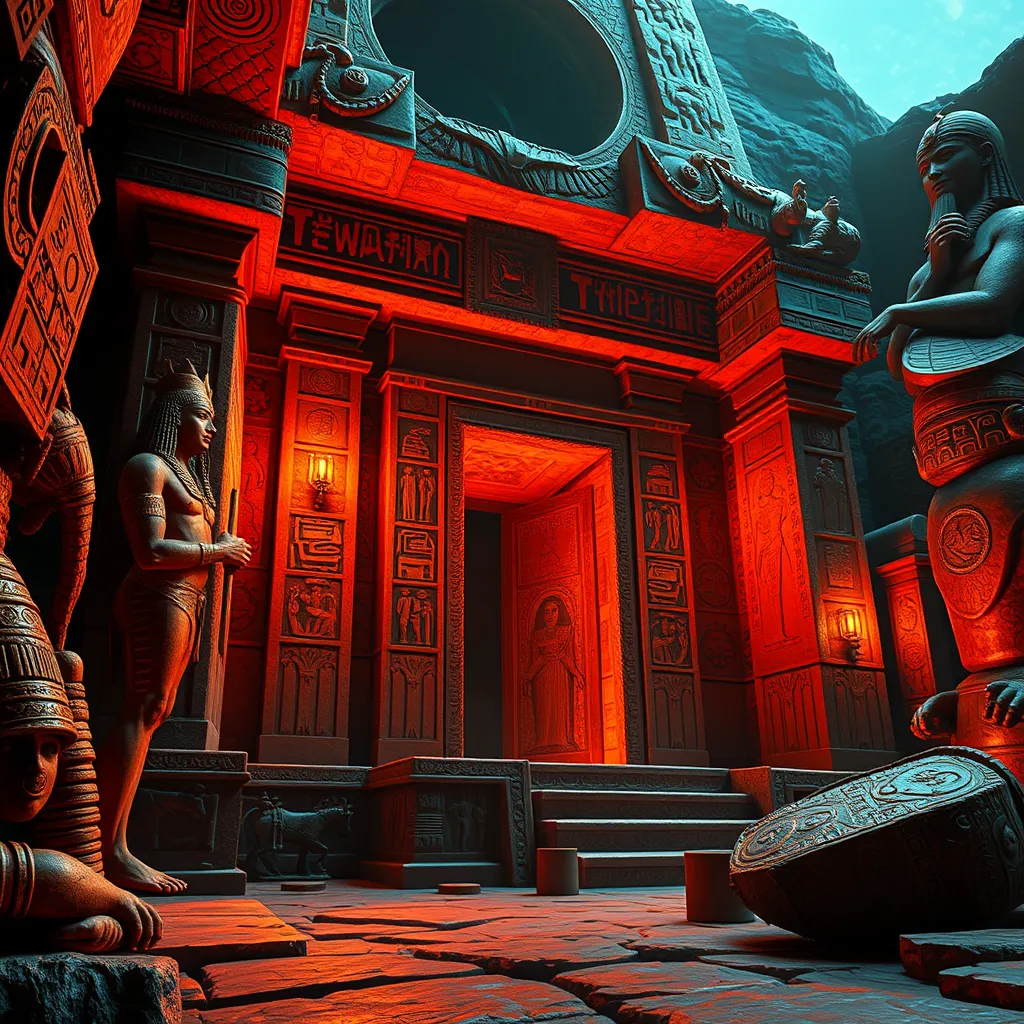The Duat: Unveiling the Secrets of the Afterlife
I. Introduction to the Duat
The Duat, often referred to as the realm of the dead in ancient Egyptian mythology, is a complex and multifaceted concept that reflects the rich tapestry of Egyptian beliefs about the afterlife. It is not merely a place of existence after death, but a significant element of a larger cosmological understanding that influenced every aspect of ancient Egyptian life.
In ancient Egyptian culture, the afterlife was seen as an extension of life on earth, where one’s actions, beliefs, and the manner of their passing determined their experience in the Duat. This belief system underscored the importance of morality, ritual, and the quest for immortality in ancient Egyptian society.
II. Historical Context
A. Origins of the Duat in Ancient Egyptian Mythology
The concept of the Duat can be traced back to the earliest periods of ancient Egyptian history, where it was often depicted as a dark, mysterious realm through which the sun god Ra traveled during the night. As Egyptian mythology evolved, so too did the understanding of the Duat, which began to be seen as a complex landscape filled with challenges and trials for the deceased.
B. Evolution of Beliefs About the Afterlife Throughout Different Dynasties
Throughout the various dynasties of ancient Egypt, beliefs about the afterlife and the Duat underwent significant changes. In the Old Kingdom, the focus was primarily on the preservation of the body and the construction of elaborate tombs. By the New Kingdom, there was a more pronounced emphasis on the spiritual journey through the Duat, as reflected in the funerary texts and the rituals that accompanied burial practices.
III. Geography of the Duat
A. Description of the Duat’s Landscape and Realms
The Duat is often described as a vast and treacherous landscape filled with a variety of realms, each with its own unique challenges. Some of the notable regions within the Duat include:
- The Field of Reeds: A paradise where the righteous could enjoy eternal bliss.
- The Waters of Chaos: A dark and tumultuous area representing the dangers faced by souls.
- The Hall of Two Truths: The place where the judgment of souls takes place.
B. Symbolism of the Various Regions Within the Duat
Each region of the Duat carries deep symbolic meaning, reflecting the moral and ethical values of ancient Egyptian society. For example, the Field of Reeds symbolizes the ultimate reward for a virtuous life, while the Waters of Chaos represent the consequences of wrongdoing and the potential for annihilation.
IV. The Journey Through the Duat
A. The Role of the Deceased in Navigating the Duat
The journey through the Duat was fraught with peril, and the deceased were required to navigate its challenges with wisdom and courage. They would face various trials, including encounters with monstrous beings and deceptive spirits, all while seeking to reach the Hall of Two Truths for judgment.
B. Key Deities Involved in the Journey, Including Anubis and Osiris
Several key deities played crucial roles in the journey through the Duat:
- Anubis: The god of mummification and the protector of the dead, Anubis guided souls through the Duat and oversaw the embalming process.
- Osiris: The god of the afterlife, Osiris represented resurrection and eternal life, welcoming the deceased into the realm of the dead.
- Thoth: The god of wisdom and writing, Thoth was often depicted as a scribe, recording the results of the judgment.
V. Judgment and the Weighing of the Heart
A. The Process of Judgment After Death
Upon reaching the Hall of Two Truths, the deceased underwent a judgment process that determined their fate in the afterlife. This involved the weighing of their heart against the Feather of Ma’at, symbolizing truth and justice.
B. Significance of the Feather of Ma’at and Its Implications for the Soul
If the heart was found to be lighter than the feather, it indicated a life lived in accordance with Ma’at, and the soul would be granted access to the Field of Reeds. Conversely, if the heart was heavier, it was devoured by Ammit, a fearsome creature, resulting in eternal obliteration.
VI. The Role of Funerary Texts
A. Examination of the Book of the Dead and Other Relevant Texts
Funerary texts, particularly the Book of the Dead, served as essential guides for the deceased navigating the Duat. These texts contained spells, prayers, and instructions designed to assist the soul in overcoming obstacles.
B. How These Texts Guide the Deceased Through the Duat
The spells would provide protection against malevolent forces and guidance through the various challenges of the Duat. They were often inscribed on tomb walls or included in burial goods to ensure the deceased had the necessary tools for their journey.
VII. Cultural Legacy of the Duat
A. Influence on Modern Interpretations of the Afterlife
The Duat has left a profound impact on contemporary interpretations of the afterlife. Its intricate mythology and moral implications continue to resonate with modern audiences, influencing various religious and philosophical perspectives on life after death.
B. The Duat in Contemporary Literature and Media
In recent years, the Duat has found its way into literature, films, and various forms of media. From novels exploring Egyptian mythology to movies depicting the journey of the soul, the mysteries of the Duat captivate storytellers and audiences alike.
VIII. Conclusion
In summary, the Duat serves as a vital key to understanding ancient Egyptian beliefs about the afterlife. Its rich symbolism, the intricate journey of the deceased, and the significant role of deities and texts contribute to a comprehensive view of how the ancient Egyptians understood mortality and immortality.
The enduring fascination with the Duat reflects humanity’s ongoing quest to comprehend the mysteries surrounding death and what may lie beyond. As we continue to explore these ancient beliefs, the Duat remains a poignant reminder of the complexities of the human experience and the universal questions of existence.




